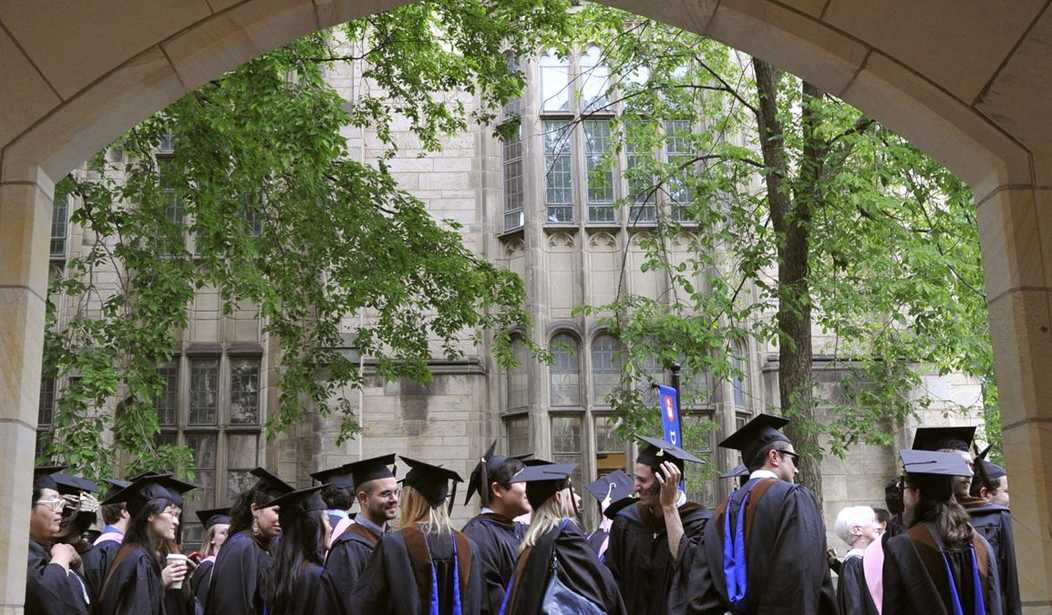The Boston Globe published an overview today of the impact the Supreme Court's affirmative action decision had on universities and colleges in Massachusetts. What the data shows is a general trend toward fewer black students and slightly more Asian students, exactly as the plaintiffs in the case predicted.
The share of Black first-year students enrolled at 11 of the most competitive schools in Massachusetts dropped, on average, about 40 percent compared with the average of the previous two years, the Globe’s analysis found...
“It is heartbreaking,” said Anthony Abraham Jack, a Boston University professor who studies first-generation students and is a graduate of Amherst College. “It is leading to the segregation of higher education. You will see top schools get whiter and wealthier.”
Except that's not at all what the data this year shows. On the contrary:
The end of affirmative action has not so far led to significant increases in white first-year enrollment, as some expected. The 30 schools in the Globe’s nationwide analysis reported a slight decline — of less than 1 percentage point, on average — in the share of white students enrolled in the first-year class. Across the top 11 Massachusetts schools, the share of white students barely budged.
But as I pointed out here, there are some conspicuous outliers which seem to have somehow bucked the trend, among them Yale, Princeton and Duke. At these schools, black enrollment remained constant or went up and Asian enrollment declined.
The suggestion is already being openly made that these schools are ignoring the Supreme Court case. And the group behind that case has already sent letters putting the schools on notice that they face further litigation.
“Based on S.F.F.A.’s extensive experience, your racial numbers are not possible under true neutrality,” the letters, signed by Edward Blum, the president of Students for Fair Admissions, said. It added: “You are now on notice. Preserve all potentially relevant documents and communications.”
Today the Wall Street Journal published an opinion piece backing up the idea that some schools are cheating.
“They’re cheating. Everyone knows they’re cheating. They know they’re cheating. What they are trying to do is cheat in a way that doesn’t get them caught in court.”
That was John Yoo’s response when I asked for his reaction to the racial breakdown of freshmen at some of the most selective U.S. colleges and universities...
Citing data from the College Board, which administers the SAT, Nicholas Lemann recently wrote in the Chronicle of Higher Education that in 2023 “the gap between average Asian and Black test scores on the SAT was more than 300 points, and . . . nationally, fewer than 2,300 Black students got combined scores of 1400 or above, which is generally considered what a student needs to be admitted to an Ivy Plus school.” Nevertheless, black enrollment at Duke, Yale and Princeton was essentially flat this year, while Asian enrollment dipped by 6% at Duke and Yale and by 2.2% at Princeton. How?
How indeed? Brown University saw a 40% decline in black enrollment this year and a story recently published in the student newspaper notes that other schools that supposedly used the same criteria showed no similar drop.
According to a Herald analysis of publicly disclosed admission policies, there are few differences between the policies Brown implemented in the wake of the Supreme Court’s decision compared to its peer institutions. But the outcomes are vastly different...
While Princeton has not disclosed nearly as many initiatives following the Supreme Court’s ruling, Yale has published an extensive list of measures they took for the class of 2028’s application cycle.
This list mirrors the policies that Brown has implemented — from targeted recruitment to expanding partnerships with community-based organizations.
These schools even added new essays to give students a chance to focus on race (without asking them to do so directly).
Brown — along with Yale, Princeton and dozens of other highly-selective colleges — added new essays to their applications that asked students to talk about their background without directly implicating their race. A new essay required for admission at Brown asks students to “share how an aspect of your growing up has inspired or challenged you, and what unique contributions this might allow you to make to the Brown community.”
“Our goal was to provide applicants ample opportunity to detail their talents, skills, experiences and ideas as they sought a college education that best fits them,” Clark, the Brown spokesperson, said in a statement to The Herald. He added that some applicants to the class of 2028 used this essay to focus on their identity while others focused on other experiences, ranging from “the impacts of climate change and global conflict on their lives, to personal experiences and work in their own communities.”
Something doesn't add up here and it's not just Students for Fair Admissions that can see it. The schools that complied with the Supreme Court ruling can see it too.
It is likely going to take years and more litigation to sort this out. The WSJ suggests what we're seeing now is very similar to what happened after the passage of Brown vs. Board of Education. John Yoo wrote, "The history of resistance to Brown v. Board of Education suggests that universities will respond to a loss at the Supreme Court not by abandoning their goal of meeting some ideal racial balance, but by pursuing the same end through less obvious means."








Join the conversation as a VIP Member